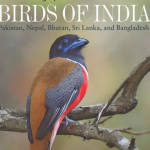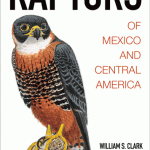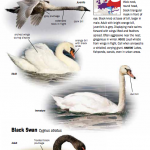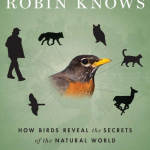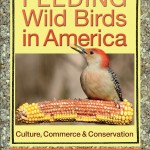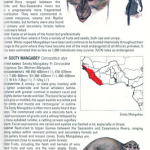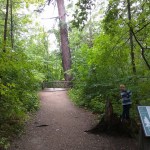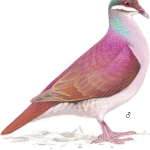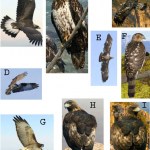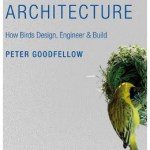birdwatching
A Photographic Field Guide to the Birds of India, Pakistan, Nepal, Bhutan, Sri Lanka, and Bangladesh is one of those next gen guides that uses photos but photos that are either enhanced or contextualized to serve the same role as drawings served in the old days, when drawings were better and photos were merely fun.
From the editors:
This is the only comprehensive photographic field guide to the birds of the entire Indian subcontinent. Every distinct species and subspecies--some 1,375 in all-
-is covered with photographs, text, and maps. The guide features more than 4,000 stunning photographs…
There are about four hundred species of birds we call "raptors" of which most are falcons, hawks, eagles, owls, and so forth. I believe there are about 40 in what is considered the United States (from a person, not a bird, perspective) and many of them are found across much of the US, with the usual breaks across the Rockies, and a certain amount of north-south geography, and varying degrees of migration.
A typical page
There are 69 species of raptors, many overlapping with those in the US, in Mexico (which is part of North America, from a human perspective) and Central America.…
Just got my copy of Birds of Europe, North Africa, and the Middle East: A Photographic Guide by Frédéric Jiguet and Aurélien Audevard.
This is the first and only field-ready photographic bird guide that covers every species in Europe. There are 2,200 photos covering 860 species. The West Asian and North African coverage is of all of the species there that have occurred in Europe, so think of this primarily as a European guide.
The entry for the Mute Swan.
I hasten to add and emphasize. These are not your grandaddy's photographs. Many photographic guides have pretty nice looking…
There was a dead rabbit in the middle of the road today. I suspected such a thing, nearby, just out of sight, and edible, because I noticed some crows taking off whenever a car went by. Then, when I went over, I could see the rabbit that they were feasting on between drive-bys.
I had been looking for rabbits lately, because of this: the cat had switched to hanging out by the upstairs window, the better to observe the just arriving Juncos (snow birds, it is fall). She had previously spent most of her time observing rabbits from the lower, ground level windows, until just the other day when…
Wildlife of the Galápagos: Second Edition (Princeton Pocket Guides), by Julian Fitter, Daniel Fitter, and David Hosking is both a field guide and a travel guide, focusing on the Galapagos Islands. It includes basic information about each island and each town or tourist destination, and a comprehensive guide to how to visit, what to bring and not bring, and otherwise plan your trip to these amazing evolution-drenched islands.
The wildlife that is covered includes birds, other land vertebrates including the famous tortoises and lizards, offshore mammals, fish, insects, and plants. There is…
When the Texas A&M University Press asked me to consider reviewing Feeding Wild Birds in America: Culture, Commerce, and Conservation by Paul Baicich, Margaret Barker, and Carrol Henderson, I had mixed feelings.
Was this just another backyard bird feeding guide? That would be nice, but not too exciting. After all, feeding birds is just a matter of getting a bird feeder and keeping it full, right? Was it an indictment of what some might consider a bad practice, because it brings birds in close contact with killer windows and cats, and causes them to become dependent on fickle human…
Here we look mainly at bird books, but I wanted to also mention a couple of other items on non-birds. I've mixed in some new books along with a few other books that have come out over the last couple of years, but that are still very current, very amazing books, and since they have been out for a while, may in some cases be picked up used or otherwise less expensively.
Let's start with the least-bird like book, one that will be a must have for anyone traveling to or studying Africa. This is The Kingdon Field Guide to African Mammals: Second edition. This is a newly produced edition of this…
When I studied the Efe Pygmies of the Congo, I discovered (and yes, it was me who discovered this amazing fact everyone now knows) that the Efe organize their space in elongated linear trails. They knew all about everything along those specific trails, and their knowledge of other trails was often very limited. If an Efe person spent time living with a group associated with a trail, he* would learn about that trail as well. Most interesting is that one’s knowledge of important things like where to find food (or danger) was based on experience not on general principles. So an Efe off his trail…
Rare Birds of North America is the only extensive treatment I've see of the so called "vagrant birds" in the US and Canada. Most, or at least many, traditional bird books have a section in the back for rare birds, occasionals or accidentals, which one might see now and then. But when you think about it, how can five or even a dozen species in a bird book really do justice to the problem of spotting birds that are normally not supposed to be spotted?
I'm reminded of one South African bird guide that has a half dozen penguin species listed in it. There is only one species of penguin in South…
A couple of years back, the The Crossley ID Guide for Eastern Birds came out and it caused a huge splash in the birdwatching world. For some time now it has become apparent that bird watching, especially the identification part of it, was changing in its approach. We describe it this way, though I think the reality is more complex: In the old days we used logical links to known reliable field marks to turn carefully made field observations into species identifications of varying degrees of certainty. Now, a new approach has been developed where we look at the whole bird and get an…
You’ve heard of the The Crossley ID Guide: Eastern Birds (The Crossley ID Guides). It is a revolutionary new way to assemble a field guide, where each page has a drawing of what it would look like if suddenly outside your living room there was a full blown habitat for some species of bird, with individuals from that species flying or sitting all over the place in different positions, doing different things, and at different distances. These pages in the field guide almost give you the experience of having seen many of this partiuclar species of bird, like you were suddenly an experienced…
Tired of merely watching birds? Ever consider trying to draw them? There's a method to do so. John Muir Laws is very good at this and he's written a book that can help you get started, maybe even become good at it yourself:Laws Guide to Drawing Birds .
In case you were wondering, Laws' name does not connect him genealogically to the famous John Muir; his parents named him that. But apparently, there is a connection between names and what people do, and John Muir Laws is in fact a naturalist.
This book covers all the usual methodology of illustration but with birds. There are a gazillion "…
Birds don't live in nests. They make nests for specific purposes, use them for that purpose, then abandon them. Or, sometimes they don't abandon them, but rather add on and use them again and again, but in between they don't live in or on them. Well, sometimes they hang out on them a lot. And not all nests are for putting their eggs in. In fact, sometimes a nest is more of a symbol of quality and overall bird sexiness than it is a place to keep the chicks. As it were. Oh, and sometimes they live in the nests, now that I think about it ... It's complicated.
But there is a book that…
I've been following a new birding blog lately, "The Daily Wing," kept by Vermont bird guide, dragonfly follower, and writer Bryan Pfeiffer. It's a nice mix of
⢠birding how-to, with guidance both basic and intricate, such as his lovely entry on a bird-attraction technique he calls spishing (especially effective in winter):
The woods were otherwise silent. Vacant. But I suspected otherwise. So I stopped and spished.
"Spshsh-spshsh-spshsh-spshsh. Psssp-psssp-psssp-psssp-psssp. Spshsh-spshsh-spshsh-spshsh."
Two white-throated sparrows jumped into view from a tangle of catbrier. Then several…
Birdwatching might be a casual activity, a hobby, an avocation, or even a profession (often, perhaps, an obsession) depending on the bird watcher, but there is always a science to it, in at least two ways. First, there is the science of how to do it. In this sense, the term "science" means something vernacular. We as easily say "birdwatching is an art" as we could say "there is a science to it" and here we are using both terms( "art" and "science") in their older sense where science is how we approach things with our minds, and art is how we approach things with our hands.
Second,…
